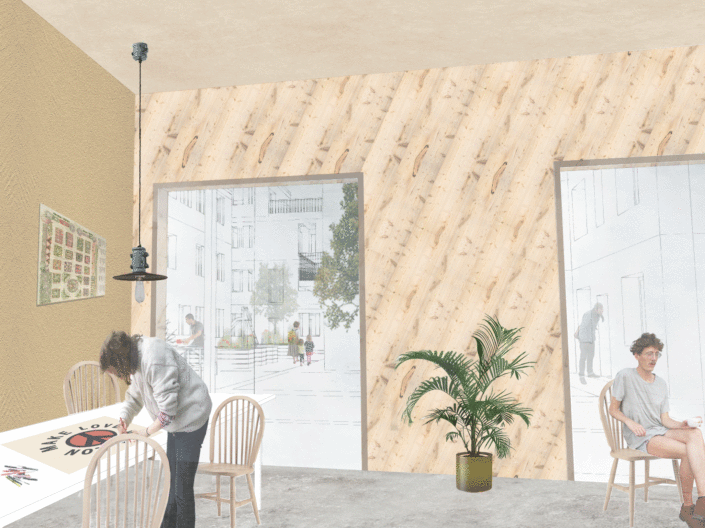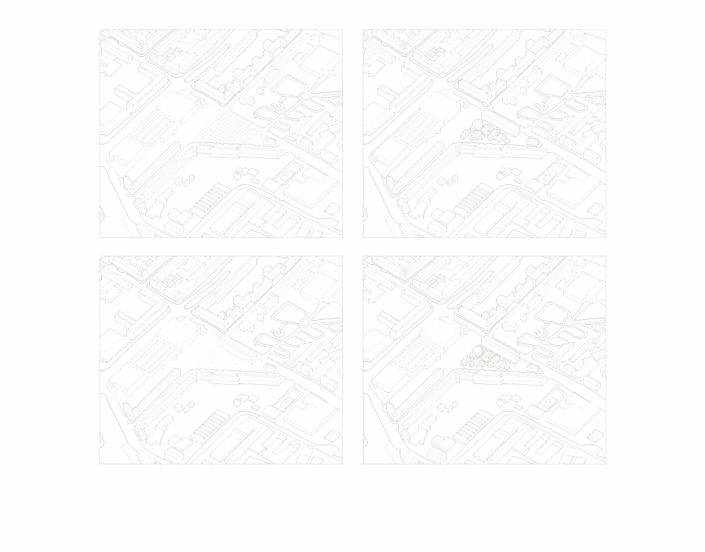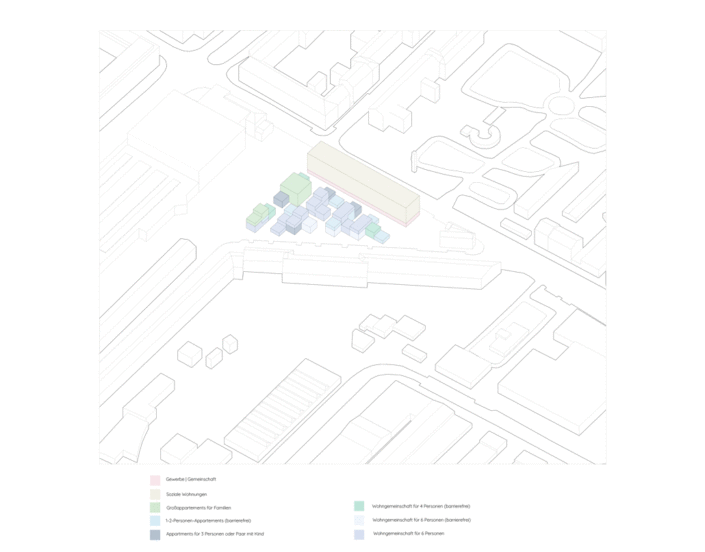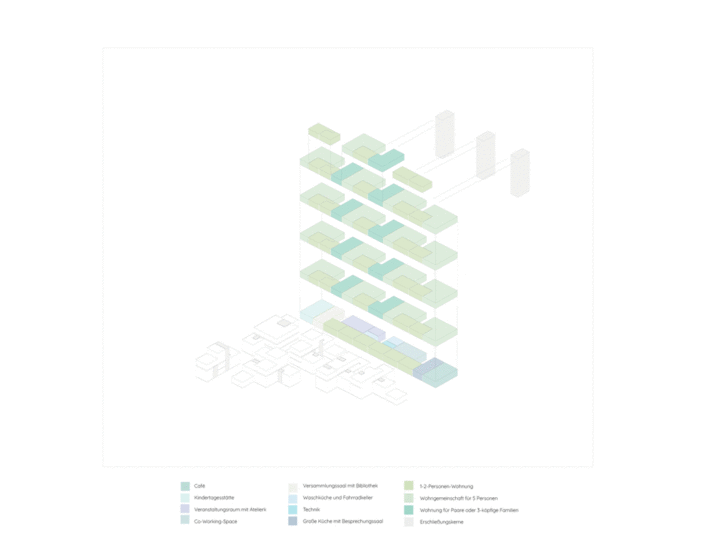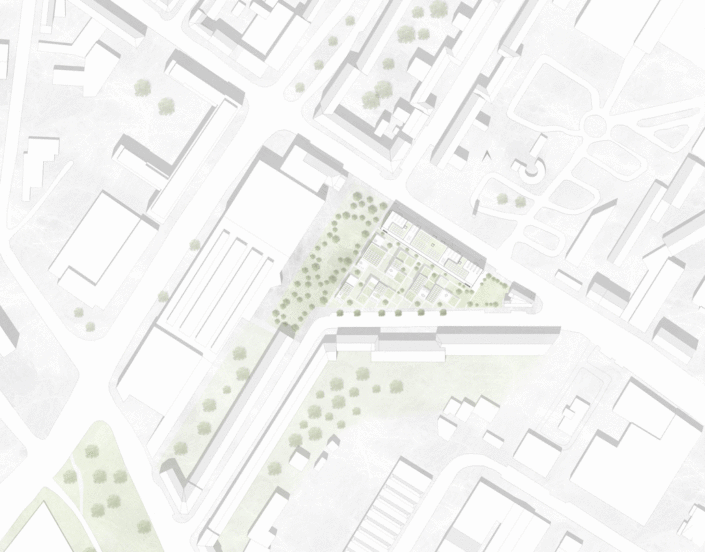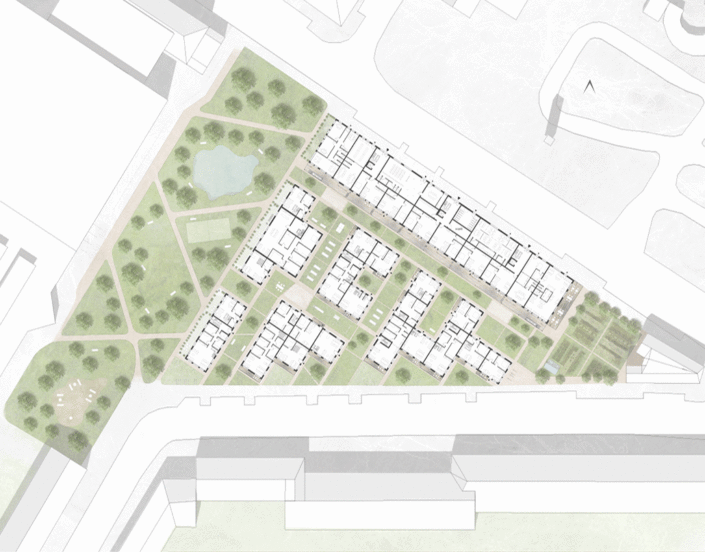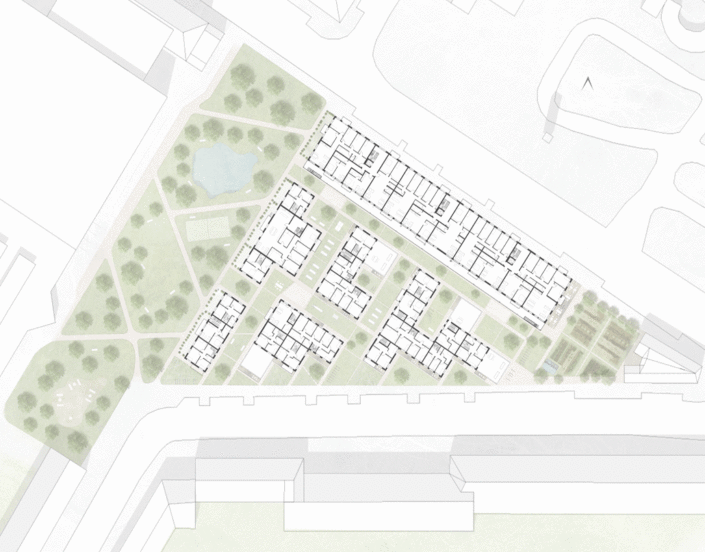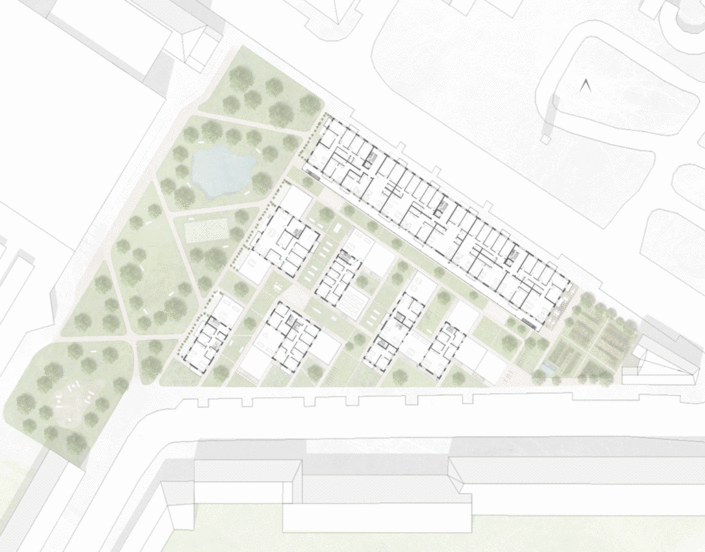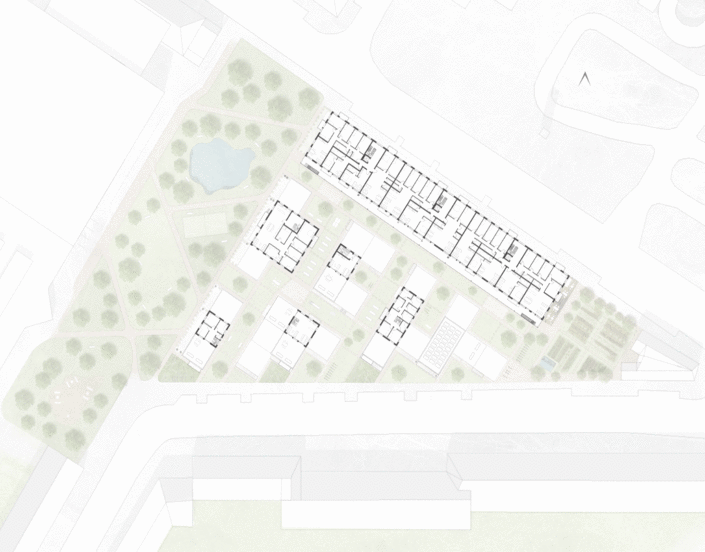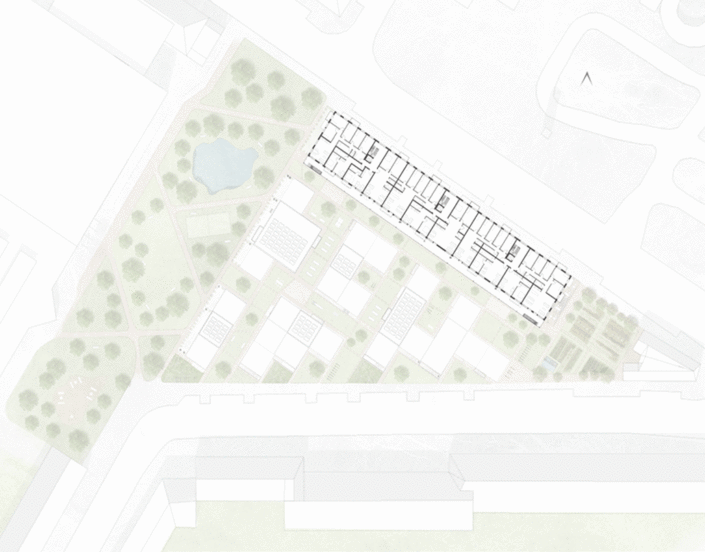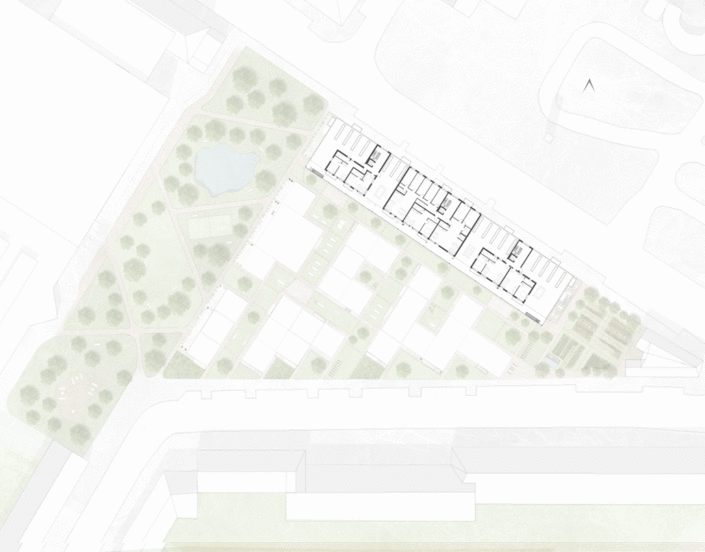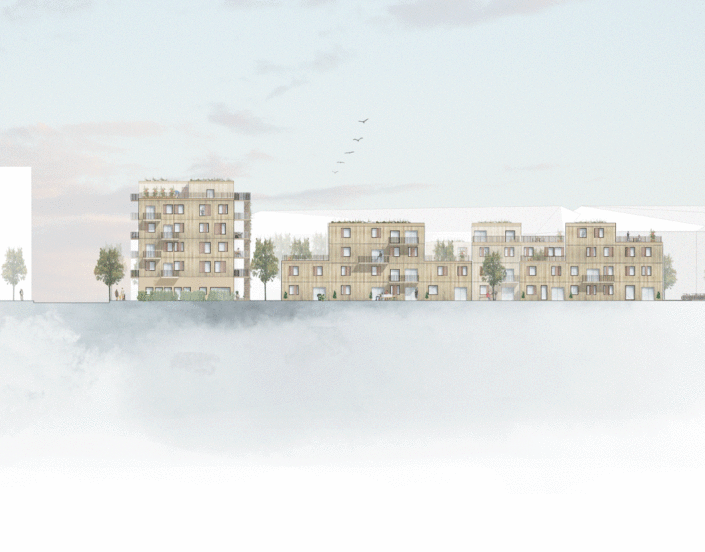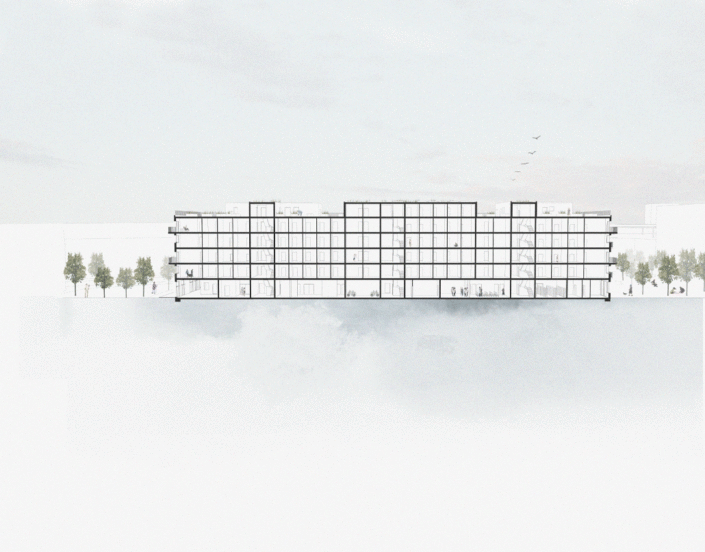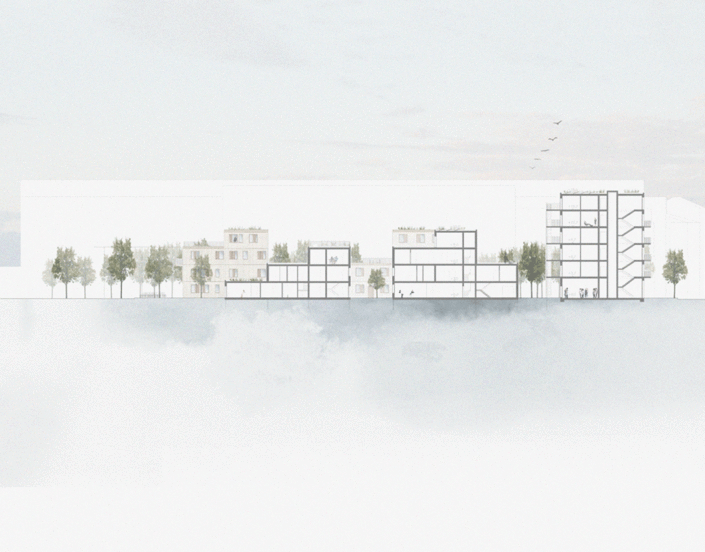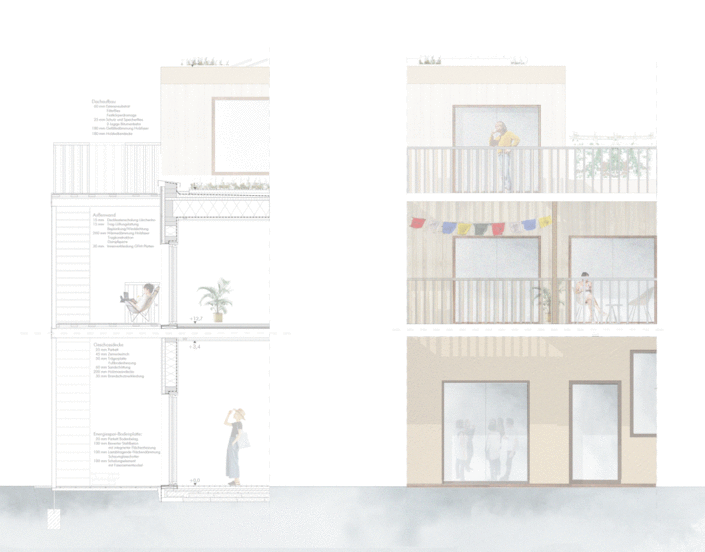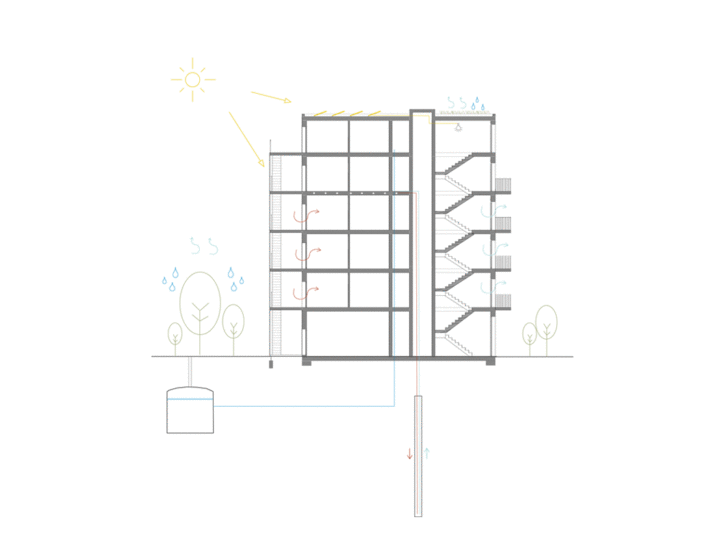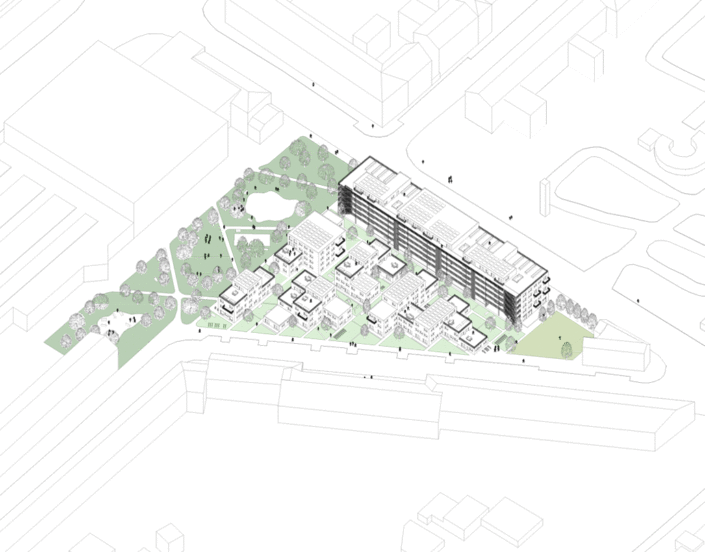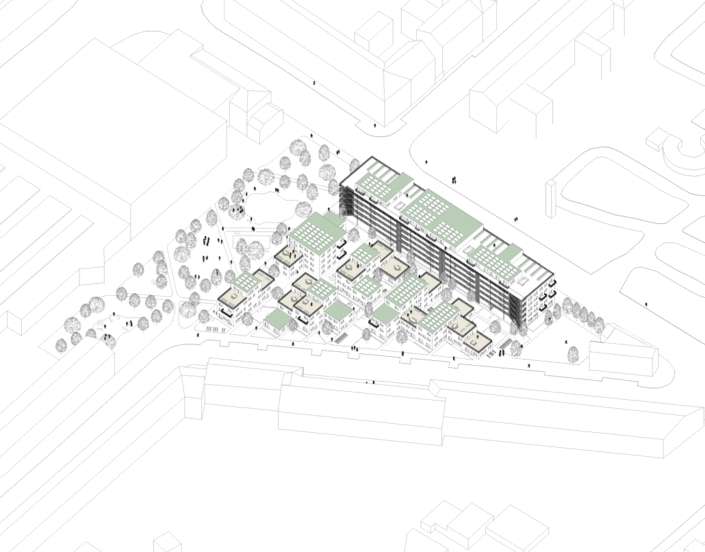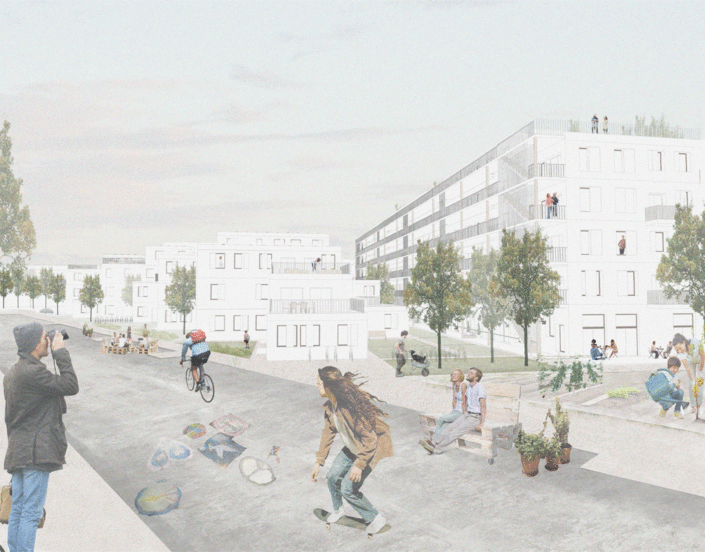Woodtecture, Münster
Master thesis
The elongated structure forms a noise barrier on the main street and breaks up into smaller cubes on a less crowded street. A social mix within the community and ecological responsibility are given here.
The ground floor of the block has public areas, such as a day-care centre, an event space with a studio and a café. Many communal areas, such as a kitchen for cooking with an adjoining dining room, a meeting place for meetings or a small library offer all residents of the neighbourhood opportunities to exchange ideas and network. Togetherness is promoted, but everyone still has their own private living space as a place of retreat. As far as possible, concrete is not used as a building material; only the base zone, the staircase core walls – the lift shaft is made of wood – and the necessary stairs are made of reinforced concrete.
The building structures consist of prefabricated timber frame walls and board stack elements from regional forests, which are connected with hardwood dowels and span from the massive stair core. The partly public ground floor zone is revealed by an earthen plaster. The remaining floors, which serve as flats, are clad in larch cover boarding.
The south-facing arcade in the main building serves not only as a sunshade and place to stay or meet but also as a second escape route.
Care was taken to minimise the amount of sealed surfaces on the entire property. The areas of terraces and green roofs create an interplay, while the neighbouring forest and the urban city garden on the other side complete the overall picture.
Several geothermal probes from great depths are used as an underground energy source that provides heat for heating and hot water all year round.
Photovoltaic modules on the roofs of the neighbourhood generate electricity, the surplus is fed into the public grid. Due to the many unsealed green spaces between the buildings, as well as on the roofscape, the rainwater that accumulates is on the one hand collected in rain cisterns and treated for household use – be it for the washing machine, kitchen or garden – and on the other hand it contributes to evaporation and thus ensures a cooler urban climate.


